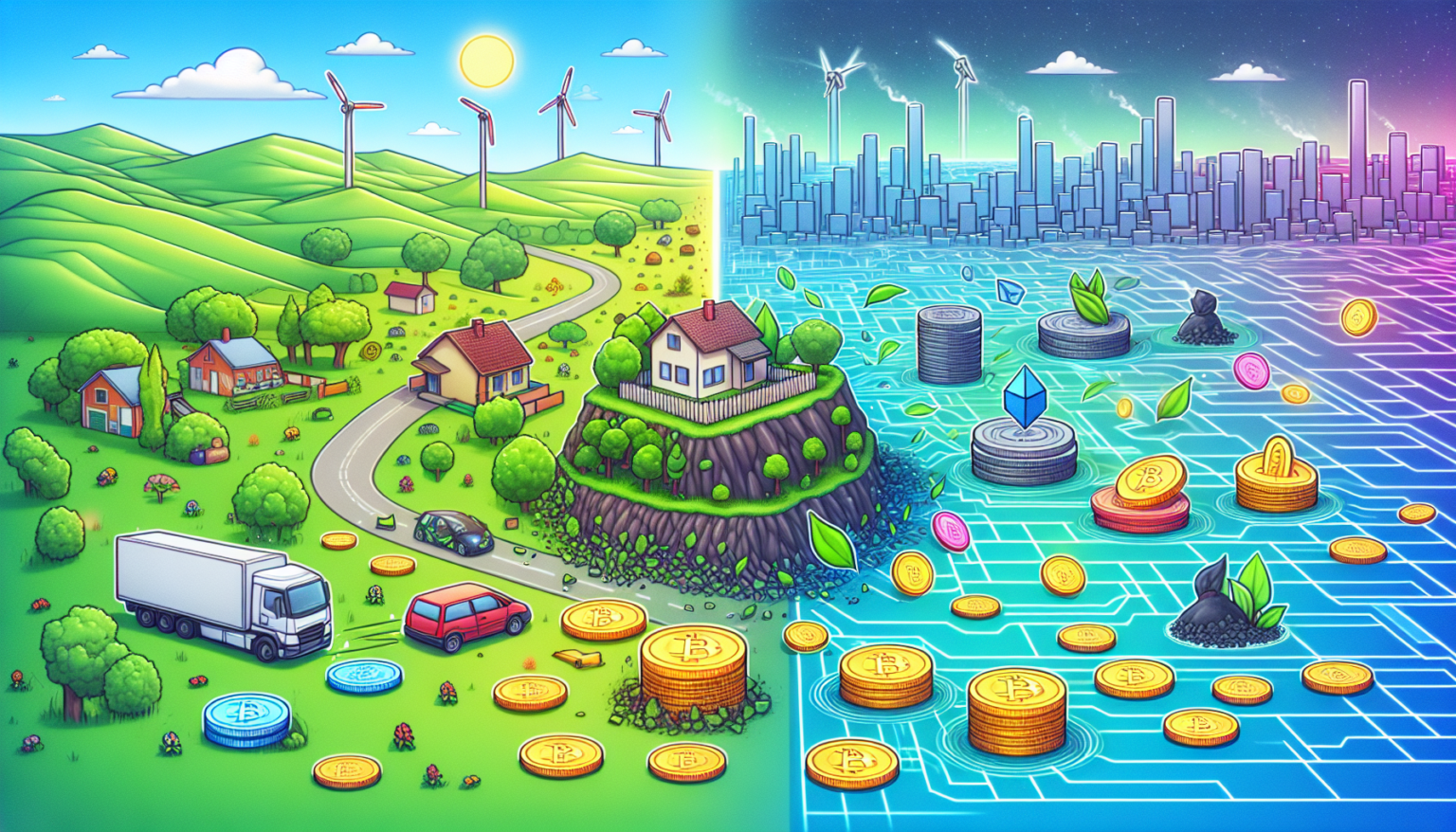The Rise of Real-World Asset Tokenization
As the digital landscape continues to evolve, real-world asset tokenization has emerged as a significant trend. This technology allows physical assets, ranging from real estate to artwork, to be represented digitally on a blockchain. This innovation offers numerous benefits, including increased liquidity, accessibility, and security. However, it also presents various environmental considerations that merit a closer look.
Understanding Tokenization and Its Environmental Implications
Real-world asset tokenization involves converting physical assets into digital tokens that can be traded on blockchain platforms. This process typically involves the use of smart contracts—self-executing contracts with the terms directly written into code. The result is a more efficient market for asset trading, yet the environmental impact of blockchain technology raises questions.
Energy Consumption of Blockchain Networks
One of the primary environmental concerns related to tokenization lies in the energy consumption of blockchain networks. Public blockchains, especially those that rely on proof-of-work (PoW) consensus mechanisms, require extensive computational power to validate transactions. This process can lead to significant energy usage.
Understanding Proof of Work
In proof-of-work systems, miners compete to solve complex mathematical problems to validate transactions. This competition requires substantial computational resources, which translates into high electricity consumption. For instance, networks like Bitcoin have been criticized for their impressive energy footprints, drawing parallels to the annual energy usage of entire countries.
Switching to Proof of Stake
In contrast to proof-of-work, proof-of-stake (PoS) systems offer a more energy-efficient alternative. In PoS, validators are chosen based on the number of tokens they hold and are willing to “stake” as collateral. This method significantly reduces the energy needed to operate the network since it eliminates the need for intense computational efforts. As tokenization gains momentum, many platforms are exploring PoS options to decrease their environmental impact.
The Carbon Footprint of Tokenization
The carbon footprint associated with blockchain operations is another critical factor to consider. The energy consumed by miner operations is often derived from fossil fuels, contributing to greenhouse gas emissions. The carbon output from mining operations can be substantial, leading to increased scrutiny from environmental advocates.
Measuring Carbon Emissions
Calculating the carbon footprint of blockchain networks can be complex. Different mining operations may utilize different energy sources; for instance, some may employ renewable energy, while others rely predominantly on coal or other fossil fuels. The overall environmental impact hinges on the energy mix of the regions in which miners operate.
Improving Transparency and Accountability
Transparency in energy use and emissions reporting is vital. Projects and companies involved in real-world asset tokenization can adopt measures like sustainability reports and carbon credits to mitigate their impact. By striving for accountability, blockchain networks can align with global climate goals.
Benefits of Tokenization in Promoting Sustainability
While tokenization poses environmental challenges, it also creates opportunities for enhancing sustainability within various industries.
Optimizing Resource Management
Tokenizing physical assets can lead to better resource management. By representing assets digitally, stakeholders can streamline processes, cutting down on waste and inefficiencies. For instance, tokenizing agricultural land can enable precise tracking of land-use patterns, ensuring more sustainable farming practices.
Encouraging Circular Economy Initiatives
Tokenization fosters a circular economy by enabling asset-sharing models. For example, tools, equipment, and even vehicles can be tokenized to enhance accessibility and promote sharing over ownership. As a result, fewer resources are consumed, and the environmental impact of production can be minimized.
Integrating Renewable Energy Solutions
Blockchain technology can help optimize and trade renewable energy. Through tokenization, consumers and producers can trade energy credits, facilitating a more sustainable energy market. This innovation encourages investment in renewable resources and contributes to a lower carbon footprint in the energy landscape.
Promoting Carbon Credits and Offsets
Tokenization can also streamline the process of trading carbon credits. By making carbon credits easily tradable on a blockchain, more organizations may participate in sustainability initiatives. This can lead to increased funding for projects aimed at reducing emissions, incentivizing greener practices across sectors.
Challenges and Opportunities Ahead
Despite the potential for tokenization to drive sustainability, several hurdles remain.
Scalability and Infrastructure Concerns
The scalability of blockchain technology can be a concern. As demand for tokenized assets grows, ensuring that blockchain infrastructures can handle increased load without exacerbating their energy consumption is critical. Solutions like layer-two protocols and off-chain transactions might alleviate some scalability issues while keeping energy use in check.
Collaborative Standards Development
Creating industry-wide standards for tokenization can help address environmental concerns. By collaborating on best practices and sustainability metrics, stakeholders can work together to minimize the carbon footprints of their projects. This approach could establish a more cohesive effort toward environmental stewardship in the tokenization space.
Engaging Stakeholders in Conversations about Impact
Inclusive discussions among stakeholders—including developers, investors, regulators, and environmental advocates—are essential for addressing the impact of tokenization. Engaging in dialogue can foster innovative strategies for reducing energy consumption while promoting tokenized assets.
Investing in Green Technologies
Encouraging investment in green technologies that power blockchain operations is vital. As the demand grows for cleaner energy sources, tokenized asset platforms can prioritize partnerships with renewable energy providers or invest in energy-efficient technology. This strategy would not only address environmental concerns but could also enhance their market appeal.
The Path Forward
Tokenization presents both environmental challenges and opportunities. As the technology evolves, it is crucial for industry leaders and innovators to prioritize sustainability in their approaches. With the right strategies, real-world asset tokenization can lead to a more efficient, sustainable future, minimizing the environmental impact while maximizing benefits across various sectors. By focusing on responsible practices and encouraging transparency, the blockchain community can contribute positively to the world’s environmental goals.








